Tsebelis G. Veto Players: How Political Institutions Work
Подождите немного. Документ загружается.


401
Question 2: Regardless of who has agenda setting powers, will the outcome in the qualified
majority winset of the Council (Q(SQ)), or only in the points that command a qualified majority
over everything that the Council can do unanimously (Q(U(SQ))? König’s (1997) data contain
only cases where Q(U(SQ) is empty. In these cases, the results are located inside U(SQ) as a
expect and not inside Q(SQ).
Question 3: Is there a difference for the influence the EP has between cooperation and
Codecision I? Is this difference in favor of the EP when it has the Commission on its side and is
not confronted with a unanimous Council? The answers to both these questions are affirmative as
the empirical results of Tsebelis et. al. (2001) demonstrate.
Question 4: Has the Commission lost agenda setting powers under Codecision I or have these
powers simply being reduced compared to cooperation? Tsebelis’ et.al. (2001) data set indicates
that when the behavior of the Commission is controlled for acceptance rate of EP amendments is
higher under cooperation. The unconditional rate of acceptance of EP amendments is higher
under codecision than under cooperation because the Commission was more negative and more
influential under cooperation than under codecision.
Question 5: Do the Commission as a bureaucracy and the ECJ as the judiciary have constant
powers, do their powers over time increase, or do their powers vary as a function of legislative
procedures? There is no empirical evidence to corroborate my expectations in bureaucracies and
the judiciary in the EU. Francino produces evidence that the institutional power of the
Commission is reduced, but he does not address the point of behavioral independence of the
Commission. Stone Sweet argues for an expansion of the role of the ECJ, while Dehousse (1998)
for a reduction, however their arguments are based on constitutional decisions, not on statutory
ones.
158
See the arguments I made about institutional and behavioral independence of central banks in chapter 10
402
Conclusions
The EU is a complicated and fast changing polity. In fact, analysts disagree whether it
resembles a presidential or parliamentary system at any point of its recent developments. Instead
of using the similarities or differences of the EU institutions with any particular polity as the
basis of my analysis, I described EU institutions (section II) and then modeled them on the basis
of veto players theory, and came to a series of conclusions (section III), which were corroborated
by the data (section IV). My expectations regarded not only the legislative system of the EU, but
also the judiciary and the bureaucracies.
At the macro level my basic conclusions are that the EU moved from a six or nine or ten
or twelve veto player system (depending on the number of countries that participated under the
Luxembourg compromise) to a three or two collective veto player legislative system (from 1987
on). However, these collective veto players were deciding by qualified majorities each (an
explicitly stated in the Treaties majority in the Council; and a de facto qualified majority
(depending on abstentions) in the EP. As a result, policy stability is very high. The legislative
rules may increase it, or decrease it as the analysis in the second half of the third section has
shown (Figure 11.3), but we are moving around a very high level of policy stability (large core).
All the consequences of policy stability are there: complaints about the important role of
“Brussels” (the headquarters of the Commission) in all European countries, important role of the
ECJ (in a comparative perspective).
The Nice Treaty is likely to exacerbate these trends. The qualified majority in the Council
is going to increase, and it is supplemented by two more required majorities: a majority of
countries members, and a qualified majority (62%) of the people of the EU. All these features
increase the core of the Council, and therefore of the EU. In addition, more countries will enter
the Union, which is likely to produce more diversified interests, and as a result even bigger
legislative core and smaller winsets of SQ. The consequences of these changes will be an
increase in policy stability, and an increased role of the bureaucracy and the judiciary.
403
I am not making a normative judgment on whether such changes are beneficial or not. I
have already stated that it depends on the position of the judge with respect to the status quo.
However, whether we are talking about behavioral the independence of bureaucrats (as my
models predict) or the institutional constraints imposed by more detailed legislation that Francino
describes, it seems that Nice has placed the EU into a heavy bureaucratization orbit.

4
04
TABLE 11.1
Three Approaches to European Integration
Intergovernmentalism Neofunctionalism Institutionalism
Are governments
the only (important)
actors?
YES NO NO
Unintended
consequences?
NO YES NO (under complete
information)

405
TABLE 11.2
Precentages of different Parliamentary responses in the second round of Cooperation and
Codecision I Procedures.
COOPERATION CODECISION
# % overall % of
second
round
# % overall % of
second
round
New
Amend.
272 0.095 0.453 281 0.138 0.533
Modif.
Amend. 163
0.057
0.272
148
0.073
0.281
Reintr. “as
is” Amend.
165
0.058
0.275
98
0.048
0.186
Not Reint.
Amend. 2266
0.791
1511
0.741
Total
2866
1
1
2038
1
1
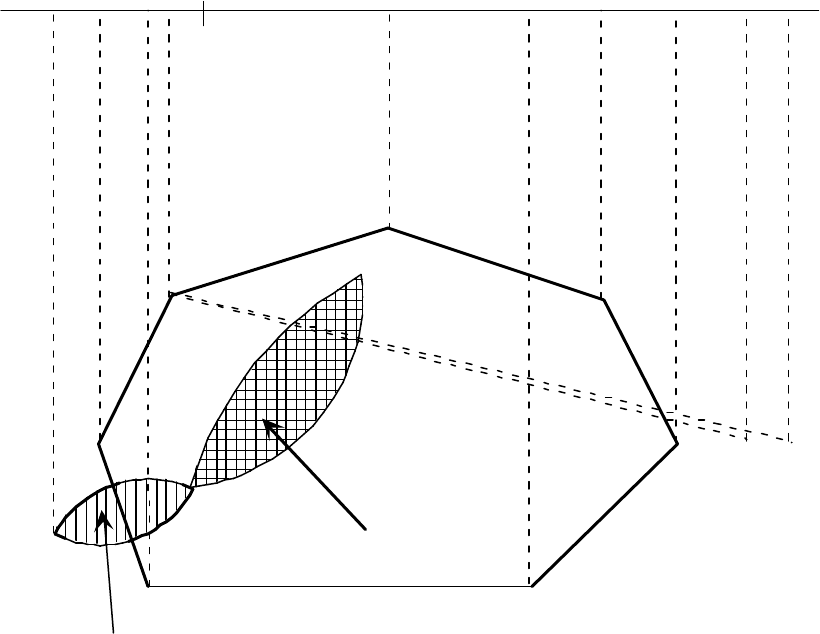
406
FIGURE 11.1
Location of outcome under cooperation procedure in one- and two-dimensional spaces
(The EP may make a proposal acceptable by the Commission in a two dimensional space but not
in a single dimension).
SQ
X
1
2
3
4
EP
C
5
6
7
SQ'
1'
2'
7'
6'
5'
3' 4'
C'
EP'
X'
Y'
Y
U(SQ)
Q(U(SQ))
Z
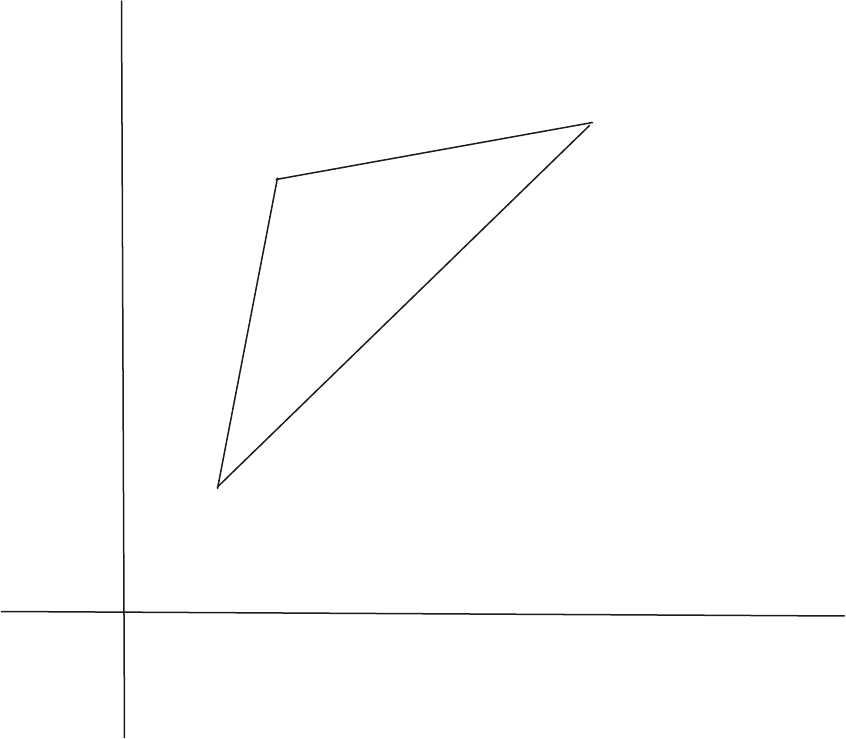
407
FIGURE 11.2
Parliament
Commission
Council
Left-Right
Integration
E
U
I
n
s
t
i
t
u
t
i
o
n
s
i
n
t
w
o
d
i
m
e
n
s
i
o
n
s
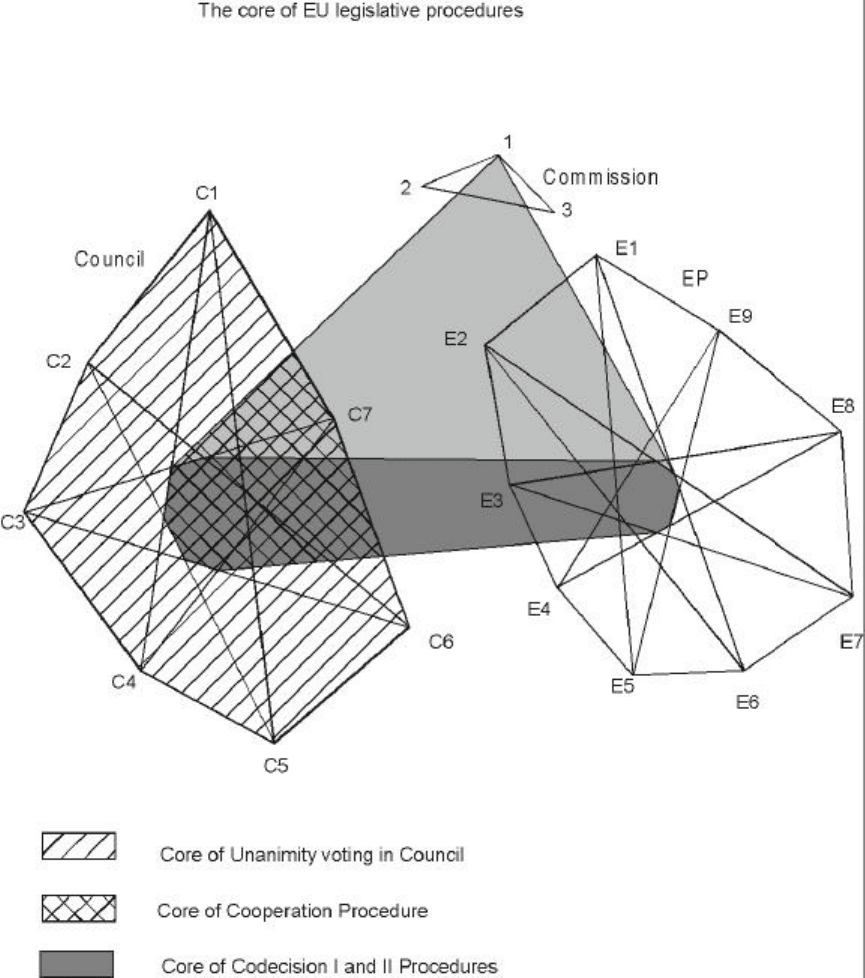
408
FIGURE 11.3
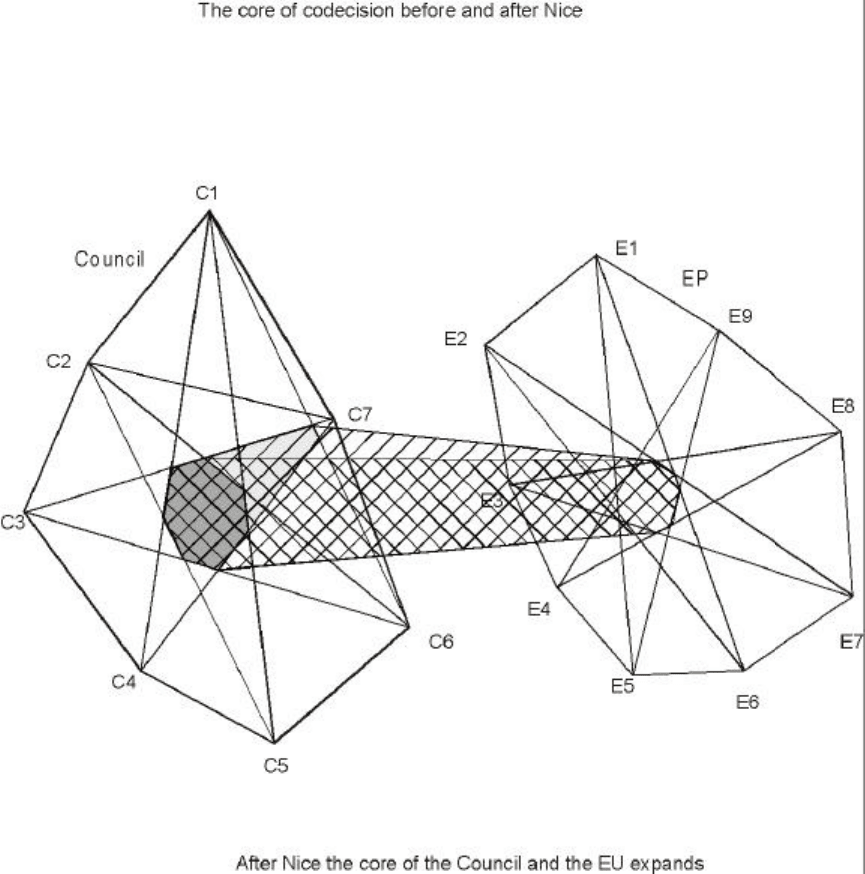
409
FIGURE 11.4
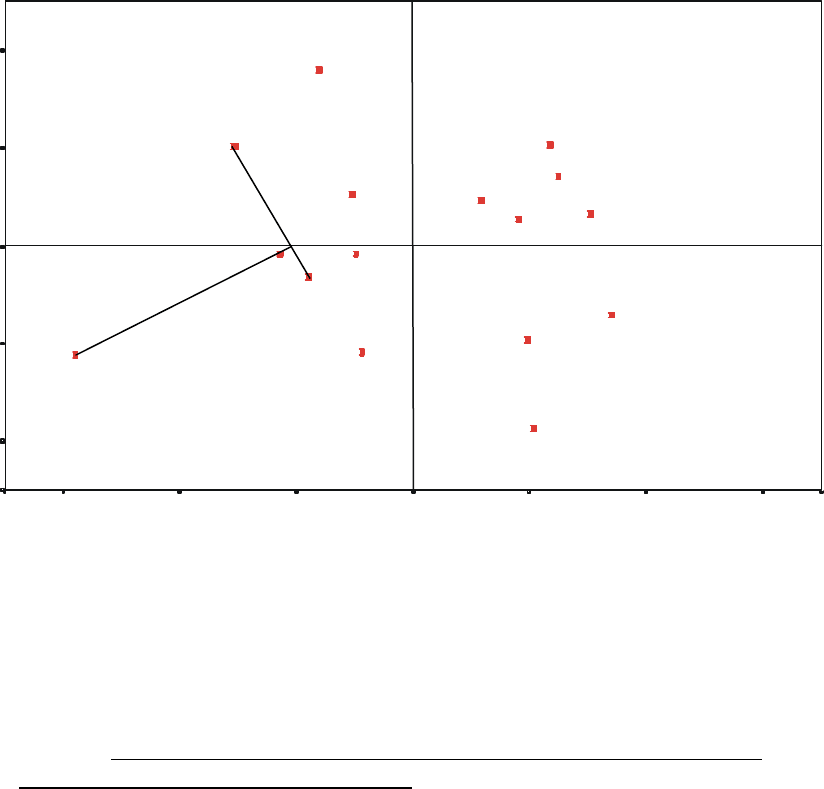
410
FIGURE 11.5
Integration of Unanimous Proposals
P
I
RE
GB
IR
F
B
E P
K
NL
D
L
DK
GR
E
SQ
0
2
,
5
2,5
-3,5
-
0 3,5
SQ’
Two-dimensional Euclidean Policy space from König
B-Belgium, DK-Denmark, D-Germany, E-Spain, F-France, GB-Great Britain, GR-Greece,
IR-Ireland, I-Italy, L-Luxembourg, NL-Netherlands, P-Portugal, EP-Parliament, K-Commission,
SQ–Status quo; RE-Results.
SQ’ outcome predicted by “least common denominator” theories
König, Thomas Europa auf dem Weg zum Mehrheitssystem. Gründe und Konsequenzen
nationaler und parlamentarischer Integration Opladen: Westdeutscher Verlag 1997.
p 187
